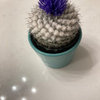Amending Native Soil
uscgardener
11 years ago
Related Stories

LANDSCAPE DESIGNFlood-Tolerant Native Trees for Soggy Soil
Swampy sites, floodplains, even standing water ... if you've got a soggy landscape, these trees are for you
Full Story
LANDSCAPE DESIGNHow to Shape a Rain Garden and Create the Right Soil for It
Learn how to grade, lay out and amend the soil in your rain garden to support your plants
Full Story
GARDENING GUIDESGrow a Beautiful Garden in Alkaline Soil
Got alkaline soil? Learn how to manage it and the many beautiful plants that will thrive in this ‘sweet’ soil
Full Story
GARDENING GUIDESHow to Stop Worrying and Start Loving Clay Soil
Clay has many more benefits than you might imagine
Full Story
GARDENING GUIDESGardening Solutions for Heavy Clay Soils
What’s a gardener to do with soil that’s easily compacted and has poor drainage? Find out here
Full Story
GARDENING GUIDESGardening Solutions for Dry, Sandy Soils
Has your desert or beachy site withered your gardening creativity? Try these ideas for a beautiful, easy-care landscape
Full Story
GARDENING GUIDESHave Acidic Soil in Your Yard? Learn to Love Gardening Anyway
Look to acid-loving plants, like conifers and rhododendrons, to help your low-pH garden thrive
Full Story
GARDENING GUIDES10 Solutions for Soggy Soil
If a too-wet garden is raining on your parade, try these water-loving plants and other ideas for handling all of that H2O
Full Story
GARDENING GUIDESHouzz TV: Make a Worm Bin for Rich Soil and Happy Plants
A worm-powered compost bin that can fit under a sink turns food scraps into a powerful amendment for your garden. Here’s how to make one
Full Story
GARDENING GUIDES5 Prairie Wildflowers That Can Heal Your Soil
Get free, organic soil fertilizer with nitrogen-pumping plants that draw pollinators too
Full StoryMore Discussions









wantonamara Z8 CenTex
cactusmcharris, interior BC Z4/5
Related Professionals
Norton Shores Landscape Architects & Landscape Designers · East Chicago Landscape Contractors · Royal Oak Landscape Contractors · Wailuku Landscape Contractors · West Chicago Landscape Contractors · Asheboro General Contractors · Auburn General Contractors · Chatsworth General Contractors · ‘Ewa Beach General Contractors · Hampton General Contractors · Shorewood General Contractors · Van Buren General Contractors · Woodmere General Contractors · Bainbridge Island Decks, Patios & Outdoor Enclosures · Lafayette Decks, Patios & Outdoor EnclosuresuscgardenerOriginal Author
cactusmcharris, interior BC Z4/5
cactusjordi
penfold2
cactusmcharris, interior BC Z4/5
wantonamara Z8 CenTex
wantonamara Z8 CenTex
penfold2
hoovb zone 9 sunset 23
wantonamara Z8 CenTex
cactusjordi
wantonamara Z8 CenTex
cactusmcharris, interior BC Z4/5